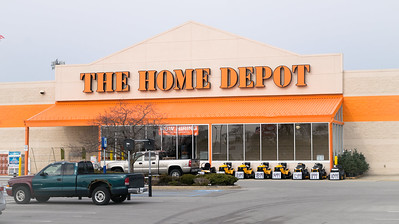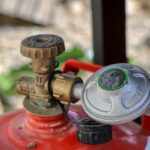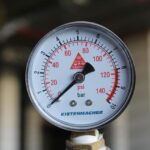Does Home Depot Refill Propane Tanks? (If Not, You Can Do This)


The Home Depot is a great place to buy things you want for your home including propane. With their stores located across the country, you would not have a hard time finding a store near your location.
But the question remains circling in everyone’s mind – does The Home Depot refill propane tank? We would like to answer that question and give you some ways to get your tank refilled.
We made some thorough exploration online and conducted inquiries with colleagues who have experience getting propane from this popular retailer.
Here’s what we’ve found out…
Read on…
The Home Depot Doesn’t Refill But Exchange Propane Tanks
Some of you may be disappointed by the answer that The Home Depot doesn’t refill propane tanks, it only exchanges. The exchange of propane tanks is only accepted in some of their centers and not in all branches. If you’re one of those frustrated by this fact, well, you can exchange your tanks rather. They have professional technicians who check every tank they offer for exchange.
With that being said, you will have peace of mind that the tank you get for the exchange is in good working condition and tested for safety.
What’s good about this retailer is that even if your tank is old and obsolete, they would surely accept it for exchange. You just ask the attendant if you want your tank to be exchanged for a full one, they assist you to get one from their cage.
Leave the empty tank in their lot, oops, please don’t bring the tank whether it is empty or full inside the store, tanks are not allowed inside, just leave your empty bottle in a designated location, and the attendant will assist you anyway.
If You Cannot Refill, Exchange to Get a Good Deal
Did you check the collar on your empty bottle? Is it nearing its expiration? If yes, this is perhaps the right time to exchange your tank – remember, you cannot fill a tank with propane if it’s expired.
The great advantage of buying propane from The Home Depot is that you can exchange your soon-to-expire tank with a fresh and newly retested one. It removes the burden from your shoulder for having your tank recertified which if you’re going to do might cost additional.
Some of the advantages of exchanging bottles are the following:
- It is easy and convenient to locate a station/retailer that accepts exchange at any time of the day and even on holidays.
- Stations and retailers do accept any brand of the tank without you worrying about it.
- You can make sure that the tank you’re getting from the exchange has been retested and re-qualified to be used for other years.
- The tanks are inspected for leak and have the stamp of safety approval.
How Much Does Propane Cost from This Retailer?
We all know that the costs of propane dwindle or increase in just a blink of an eye. You would find that the figures we are going to mention are not accurate anymore. But as of today, August 5, 2022, the cost of refilling a 20-lb propane tank is $25 and the 33-lb bottle is $35. If you would like to slash some dollars, go to their website and get a discount coupon (coupons are given depending on the season and participating in The Home Depot locations). The costs of propane refill significantly vary and depend on the retailer. Tractor Supply is just another popular choice for consumers.
We all know that refilling is more economical than purchasing a new one. If you don’t have an empty tank for a refill, buy a separate tank from another retailer. You can visit an online classified ad to acquire one or ask your colleagues if they have tanks no longer in use.
If you purchase an empty tank from a different source, make sure that the tank is still safe to use and has been retested as expired bottles can be risky to use. Check the date stamped on the collar of the cylinder.
You Can Buy a Full Propane Bottle from This Retailer
Aside from exchanging, you can buy a propane tank that is full from this retailer. However, you just have to pay extra for the bottle which is usually cheap.
The sizes of tanks you can buy from Home Depot vary. They usually have a 20-lb tank and a 33-lb tank. Anything that’s bigger than this, you may have to go to a different location to refill. So whenever you run out of gas for your grill, food truck, RV or camper, and your tank goes bad, you can conveniently exchange your empty cylinder or buy from this retailer.
Home Depot is a retailer. They get their supply from big propane suppliers. They just receive full bottles from this supplier and place them in the cages, whenever a customer needs one, the customer just has to pay and get on from one of these cages.
How to Get a Discount
The Home Depot offers a variety of discounts for their customers. They have a wide range of discounts that vary from seasonal to ongoing discounts.
The Home Depot is one of the best-known home improvement stores that have a wide range of products to choose from. It offers discounts and sales on its products, so it is important for you to know how to get a discount.
One way to get a discount at Home Depot is by using their coupon code. You can also ask for a discount by mentioning the store’s name when you are checking out. More details about this process can be found on their website.
Another way to get a discount at Home Depot is by using their receipt as proof of purchase. They have different ways that you can use your receipt, such as exchanging it for an upgrade or refunding your purchase amount with the purchase of another item within 30 days after your purchase date.
There are many ways to get your hands on this discount, but some of them may require you to shop around a bit more than others. But, it’s worth it!
Locating a Store Near You That Offer an Exchange
The Home Depot offers a convenient propane refill service at select locations across the United States. To find a location near you, simply visit the Home Depot website and click “Propane Refill Locator” tool.
Just enter your zip code into and it’ll show you the closest stores to you. Once you’ve found a store, simply click on the ‘Get Directions’ button and it’ll provide step-by-step directions to help you get there. We know that time is of the essence when you’re running low on propane, so you have to make sure that you get to your destination as quickly and easily as possible.
Once you’ve found a location, simply bring your empty propane tank to the store and exchange it for a full one. The whole process takes just a few minutes and is a great way to save time and money on your propane needs.
How to exchange propane tank at the store
If you have a propane tank that is running low, you can exchange it at Home Depot. Here’s how:
- Take your empty tank to the Home Depot store.
- Go to the customer service desk and let them know that you’d like to exchange your tank.
- They will give you a new, full tank in exchange for your old, empty one.
- That’s it! Now you can go back to using your propane tank without worry.
The popular brand Blue Rhino is the tank available at Home Depot. The Blue Rhino propane tank is one of the most popular tanks on the market and is available at most Home Depot locations. The tank is known for its durability and reliability, and is a great choice for those who want a dependable propane tank.
The tanks are typically used for outdoor grilling, but can also be used for other purposes such as heating a pool or spa. The Blue Rhino brand is known for its quality and durability, and has been a trusted name in propane tanks for many years.
Tips for Determining if Your Tank is Eligible for Exchange
- Check the Date:
- Your propane tank will have a manufacture date stamped on its collar. This is essential to note, as tanks are generally safe for refilling for 12 years from this date.
- If your tank has been requalified, there will be an additional date stamp. From that requalification date, your tank typically has another 5 years of safe use.
- Before you go to the store, ensure your tank’s date falls within this accepted range to avoid any setbacks.
- Inspect for Damage:
- Do a thorough check of your tank. Look out for any signs of damage like dents or deformities.
- Is there excessive rust? This can compromise the tank’s structure.
- Notice any cracks, especially near the valve or weld areas? That’s a sign your tank might be unsafe for further use.
- Test the Valve:
- The valve is essential. Ensure it turns easily and doesn’t stick, indicating potential internal issues or rust.
- Make sure that when you close the valve, no gas escapes, ensuring it seals correctly.
- Check for Leaks:
- Your safety should always come first. Before heading for an exchange, it’s wise to check if your tank has any leaks.
- You can do a simple test with a soapy water solution. Spread the solution around the valve and on the tank’s surface. If you see bubbles forming, your tank has a leak and might not be safe for use.
- Consult the Store:
- If you’re ever in doubt or unsure about your tank’s condition, reach out to the store.
- Home Depot staff or employees at other exchange locations can guide you on the spot.
- Keep in mind, sometimes they might accept a tank with minor issues, but there could be an extra fee for handling.
By keeping these tips in mind, you’re on your way to a hassle-free propane exchange experience. Always prioritize safety – when in doubt, consult an expert or store representative.
How to Save on Money On Propane Exchange
Certainly, here are some strategies you can employ to save money when exchanging propane tanks:
1. Compare Prices:
- Shop Around: Before exchanging your propane tank, check prices at different retailers in your area. This includes big-box stores, gas stations, and dedicated propane suppliers.
- Online Deals: Some retailers offer discounts or promotional prices online. Check the retailer’s website or apps that offer price comparisons for propane exchange.
2. Use Loyalty Programs or Memberships:
- Many retailers, especially large chains, offer loyalty programs where you can earn points or receive discounts on recurring purchases, including propane exchanges.
- If you’re a member of a wholesale club (like Costco or Sam’s Club), they might offer propane exchanges at a reduced rate for members.
3. Refill Instead of Exchange:
- In some cases, having your propane tank refilled might be cheaper than exchanging it for a new one. Dedicated propane dealers or filling stations often charge you only for the propane you purchase, which might result in savings, especially if your tank isn’t entirely empty.
4. Check for Special Promotions:
- Retailers occasionally run special promotions, especially around holidays like Memorial Day, Fourth of July, or Labor Day, when grilling is popular. Look for ads or in-store signage announcing discounts or offers.
5. Purchase in Off-Peak Seasons:
- Demand for propane typically rises in grilling season and falls during the colder months. You might find better deals or promotions during off-peak times.
6. Check Tank Expiry Before Exchange:
- Propane tanks have an expiration date (usually 12 years from the manufacture date). If your tank is nearing its expiration date, it might be declined for an exchange. Knowing this in advance can save you a trip and ensure you’re not paying for unnecessary exchanges.
7. Invest in a Larger Tank:
- If you use propane frequently, consider investing in a larger tank. The cost per gallon often decreases with larger tanks, leading to savings in the long run. Remember, however, that larger tanks will be heavier and might require special handling or storage considerations.
8. Maintain Your Tank:
- Ensure your tank is in good condition. A well-maintained tank is less likely to develop leaks or issues, meaning you won’t need to replace it prematurely. Regularly check for rust, ensure the valve works correctly, and protect it from extreme weather conditions.
9. Group Discounts:
- If you’re part of a community, neighborhood, or organization that uses propane, consider bulk purchasing or negotiating a group discount with local suppliers.
By employing some or all of these strategies, you can maximize your savings on propane exchanges and ensure you’re getting the best value for your money.
FAQs
- What is Home Depot’s propane exchange service?
- Home Depot’s propane exchange service allows customers to bring in their empty propane tanks and swap them for full ones, rather than refilling the old tanks.
- How does the exchange process work?
- Customers bring their empty tank to the designated exchange area, pay the exchange fee, and then receive a pre-filled tank in return.
- Is the propane exchange service available at all Home Depot locations?
- While many locations offer this service, it’s a good idea to call your local store or check online to confirm availability.
- Are all propane tanks compatible with the exchange program?
- Most standard 20-pound propane tanks are eligible for exchange. However, tanks must meet specific safety standards and regulations.
- What happens to my old tank when I exchange it?
- Old tanks are collected by the propane supplier, inspected for safety, possibly refurbished, and then refilled and redistributed. Tanks that don’t meet safety standards may be recycled or disposed of properly.
- How do I know if my tank is eligible for exchange?
- Tanks should have a visible manufacture or requalification date stamped onto them. Typically, tanks that are 12 years from the manufacture date or 5 years from the requalification date need inspection before they can be refilled.
- Tanks should not have excessive rust, dents, or other signs of damage.
- The valve should be in good working condition, without any visible damage or defects.
- How does the cost of exchanging a tank compare to refilling it?
- Exchanging might be slightly more expensive than refilling, given the convenience and safety checks involved. However, prices can vary, so it’s essential to compare costs locally.
- Can I exchange a tank from another retailer or brand at Home Depot?
- As long as the tank meets safety standards and is a standard 20-pound size, it should be eligible for exchange, regardless of the original purchase location or brand.
- What if I don’t have a tank to exchange? Can I still get a filled propane tank at Home Depot?
- Yes, most stores offer new propane tanks for purchase, which come pre-filled.
- Are the exchanged tanks filled to the maximum capacity?
- Tanks are typically filled to about 80% capacity, allowing for propane expansion due to temperature changes.
Refilling vs Exchanging Propane Tanks
| Refilling vs. Exchanging Propane Tanks | |
|---|---|
| Refilling Propane Tanks | Exchanging Propane Tanks |
|
Advantages: – Cost-Efficiency: Often costs less than exchanging. – Eco-friendly: Reduces waste and maximizes the lifespan of the tank. – Quality Check: You see the amount being filled. – Familiarity: You know the tank’s history. |
Advantages: – Convenience: Exchanging is faster. – Uniform Inspection: Tanks meet safety standards. – Wider Availability: Many retail locations offer exchanges. |
|
Disadvantages: – Time-Consuming: Refilling might take longer. – Location Constraints: Limited refilling locations. – Expiration Date: Tanks have a lifespan. |
Disadvantages: – Potentially Higher Cost: Set price for exchange. – Unknown History: You don’t know the exchanged tank’s history. – Not Always Full: Some tanks may not be filled to maximum capacity. |
To Make a Conclusion
The need for propane, whether for grilling, heating, or other household purposes, is a recurring one for many consumers. As such, understanding the specific services offered by major retailers is paramount. Home Depot’s approach to providing propane via an exchange system rather than refilling in-store is rooted in convenience, safety, and efficiency. However, it’s essential to be aware that while this system offers quick and straightforward access to propane, it might not always be the best fit for every individual’s requirements.
When deciding on whether to refill or exchange your propane tank, it’s crucial to consider factors like cost, the condition of your tank, and personal convenience. Some might prioritize the familiarity of using their own tank and opt for a refill, while others may value the speed and hassle-free experience of an exchange.
In the end, the most important takeaway is to choose the method that aligns best with your needs, ensuring you’re both safe and satisfied. Remember, whether refilling or exchanging, always prioritize safety and make sure you’re working with reputable providers.

Mike is an experienced propane technician with over 15 years of professional experience in the field. He has dedicated his career to helping customers with their propane needs, from installation to maintenance and repair. Together with Jeremy, he co-founded this website to provide useful information and guidance to customers seeking reliable propane services.
Mike is an experienced propane technician with over 15 years of professional experience in the field. He has dedicated his career to helping customers with their propane needs, from installation to maintenance and repair. Together with Jeremy, he co-founded this website to provide useful information and guidance to customers seeking reliable propane services.
View All Articles
